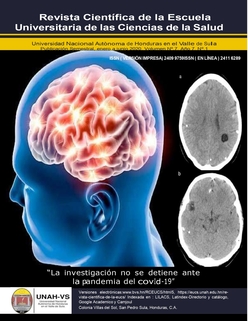Arnold Chiari’s malformation case series: Hospital Nacional Mario Catarino Rivas, 2008-2018.
DOI:
https://doi.org/10.5377/rceucs.v7i1.10946Keywords:
Headache, Dysphagia, Arnold Chiari MalformationAbstract
The Arnold Chiari malformation (ACM) is a disease first described in 1883 and classified in 1891 into four groups. A prevalence of Chiari type 1 malformation of 0.24- 0.9% has been reported in adults who have a brain MRI for any reason. Symptoms are related to obstructive hydrocephalus, abnormal eye movements, and spinal myelomeningocele. Its cause is multifactorial and the clinical manifestations are very varied. It is related to craniosynostosis syndromes, osteopathic syndromes, connective tissue disorders, vertebral anomalies, craniofacial anomalies, Williams syndrome, Noonan syndrome and neurofibro- matosis. The diagnosis is made by magnetic resonance imaging.
Clinical cases: A series of 3 cases of patients who attended the Mario Catarino Rivas Hospital (HMCR) in the period 2008-2018 is presented. The reason for consultation was different in each patient, being: vomiting, muscle strength loss, dysphagia, pain in the right upper limb, paresis and paresthesia of the lower limb and ataxia, increased head circumference. The type of malformation was type 1 in two cases, type 2 in two cases, and it was not recorded in the file in 2 cases. Only two of the patients underwent surgery, having a satisfactory postoperative evolution.Conclusions: (ACM) is a poorly studied pathology in the country. There is no global presence, so it must always be taken into account when presenting a patient with any of these symptoms.
Downloads
1214




